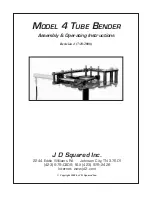
R216 Rotary Disc Header – MD #215029 Revision A
Supplement to R216 Rotary Disc Header Operator’s Manual
Subject to change without no ce
Adjus ng the Condi oner Rolls
Roll Gap
Roll Tension
Increase condi oning:
1.
Loosen jam nut (A) on both sides of the condi oner.
2.
Turn lower nut (B) counterclockwise to decrease roll gap (C).
3.
Tighten jam nut (A) on both sides of the condi oner.
Decrease condi oning:
1.
Loosen jam nut (A) on both sides of the condi oner.
2.
Turn lower nut (B) clockwise to increase roll gap (C).
3.
Tighten jam nut (A) on both sides of the condi oner.
IMPORTANT:
Ensure nuts are adjusted equally on both sides of the disc
header to achieve consistent gap across the rolls.
Decrease tension (light crops):
1.
Loosen jam nut (A) on both sides of the condi oner.
2.
Turn bolt (B) counterclockwise to increase exposed thread (C)
equally on both sides of the condi oner.
3.
Tighten jam nut (A) on both sides of the condi oner.
Increase tension (heavy or tough crops):
1.
Loosen jam nut (A) on both sides of the condi oner.
2.
Turn bolt (B) clockwise to decrease exposed thread (C) equally on
both sides of the condi oner.
3.
Tighten jam nut (A) on both sides of the condi oner.
Se ng the Float
1.
Lower header un l cu erbar is on the ground.
2. Adjust
header lt to desired working angle.
3.
Press rotary scroll knob (A) on the HPT to display the QuickMenu
system.
4.
Rotate scroll knob (A) to highlight header
fl
oat icon (B), and press
scroll knob to select.
5.
Turn scroll knob (A) to highlight le
fl
oat (B) or right
fl
oat (C).
6.
Press knob (A) to ac vate the selec on.
7.
Rotate the scroll knob to adjust the
fl
oat se ng. Set
fl
oat as light as
possible without excessive bouncing. Recommended star ng se ng
at 43–47 kg (95–105 lb.).
NOTE:
Adjust the
fl
oat in small increments.
8.
Press the scroll knob when
fi
nished making adjustments.
Adjus ng Cu ng Height
Header Angle
Skid Shoes
Shallow Angle
Steep Angle
Intermediate Posi on
Lower Posi on
Use a shallow angle when the
ground is rocky, ridged, and loose
or uneven.
Use a steep angle when the ground
is
fi
rm, level, or smooth.
Use the upper posi on when the
ground is smooth, or to produce a
short stubble.
Use the lower posi on when the
ground is uneven, or to produce a
high stubble.




















